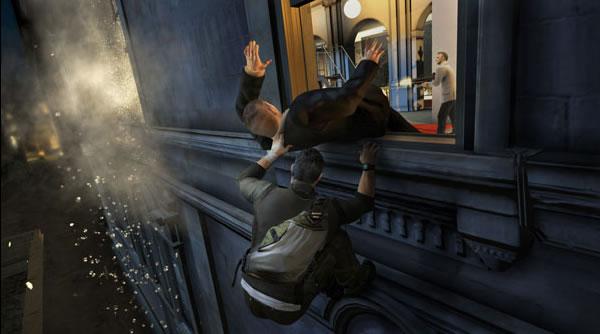Conclusion
Tom Clancy's Splinter Cell: Conviction is a very demanding video game that will put even the most powerful rigs under the pump. For many enthusiasts the lack of multi-GPU support will be a problem and we hope that ATI/Nvidia and Ubisoft can work quickly to solve these issues. While Crossfire did show gains as large as 42% when adding a second Radeon HD 5870 graphics card under certain conditions, we would like to see performance improved in most scenarios.
While 1920x1200/1920x1080 could generally be considered a very high resolution, it's nothing particularly extreme by today's standards. Today you can purchase a capable 24-inch LCD monitor starting at just $200, with better quality models going for $300+. This being the case, we have to assume owners of such monitors will want want to game at the LCD's native resolution, and in Splinter Cell: Conviction that is no piece of cake.
Those looking to enjoy the best visuals this game has to offer will require a Radeon HD 5850 ($310) or GeForce GTX 470 ($350) at the very least. Even the mighty Radeon HD 5870 and GeForce GTX 480 graphics cards were limited to less than 50fps on average.

The medium quality settings with anti-aliasing disabled offer a safe heaven for owners of previous generation graphics cards like the Radeon HD 4870 and GeForce GTX 275, which can still handle 1920x1200 resolutions.
Something we found interesting about our results was how poorly the GeForce GTX 200 series performed. The latest Forceware 197.45 drivers for Windows 7 64-bit were used, so it will be interesting to see if Nvidia issues a new driver shortly to address the Splinter Cell: Conviction performance for these graphics cards. Considering that the Radeon HD 5750 and GeForce GTX 285 were neck and neck most of the way through our testing, Nvidia must be busy trying to fix this along with SLI compatibility.
Those already in possession of a relatively high-end graphics card looking to squeeze even more performance out of their system should turn to their CPU. Overclocking our Core i7 saw significant performance gains when going from its default operating frequency of 2.60GHz to 3.71GHz with the Radeon HD 5870.
We also found that frame rates would fluctuate quite dramatically when using a dual-core processor. Splinter Cell: Conviction will fully utilize a dual-core processor, loading up both cores, while a quad-core like the Core i5 750 is able to distribute the workload more evenly and avoid bottlenecks.
All in all, Splinter Cell: Conviction is a demanding game that appears to still require a bit more tuning before gamers can get the maximum performance out of their systems. Although patch 1.02 came quickly to fix many outstanding issues, you can expect more optimizations to come in the near future, including proper SLI and Crossfire support.